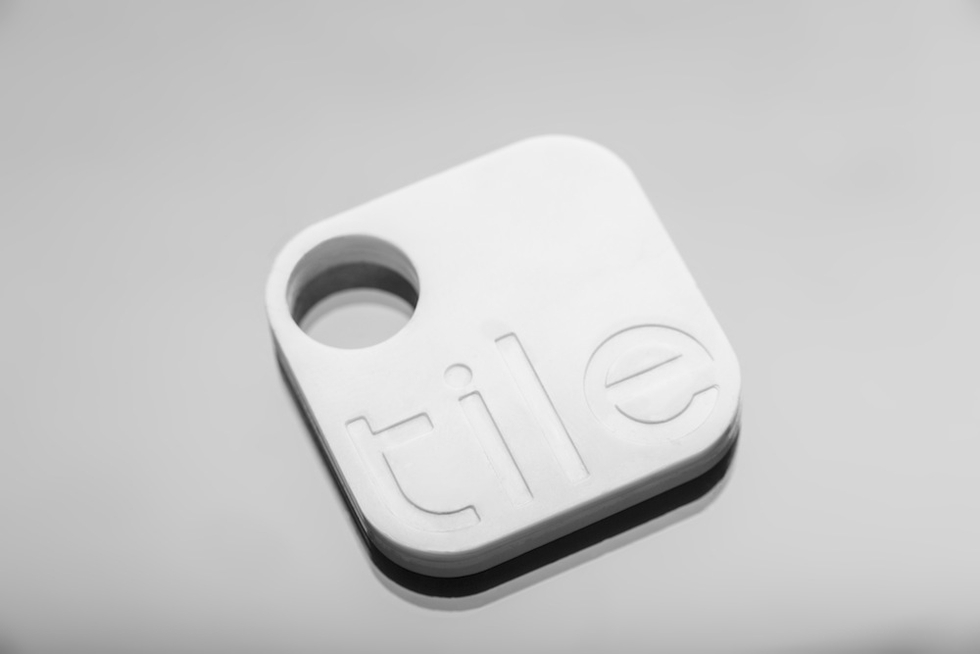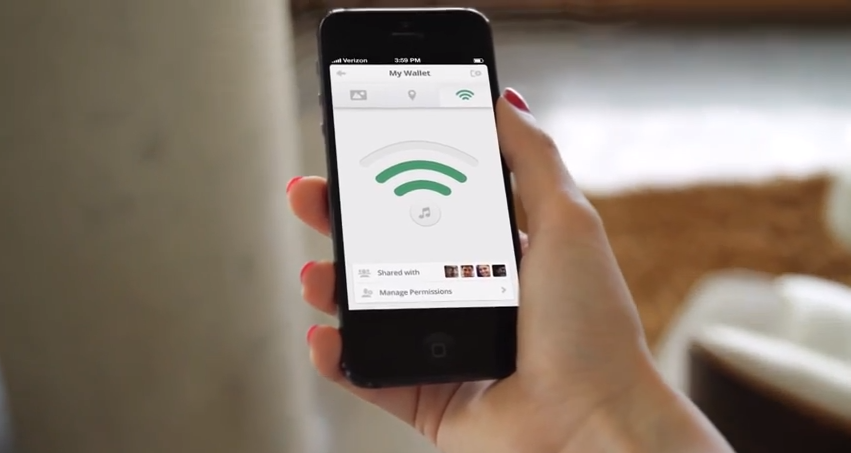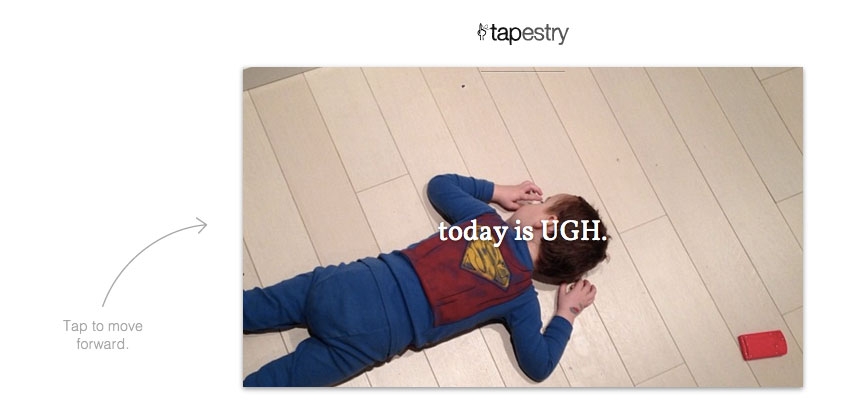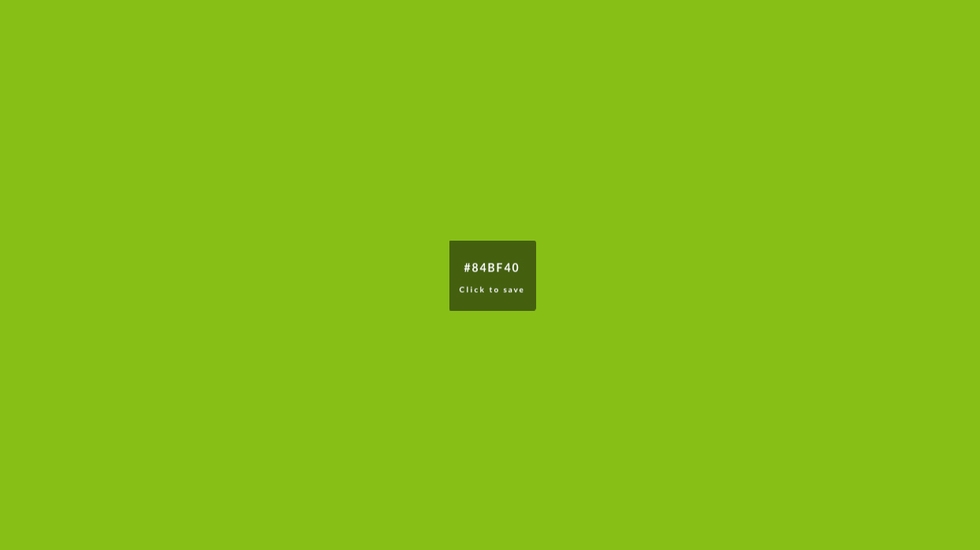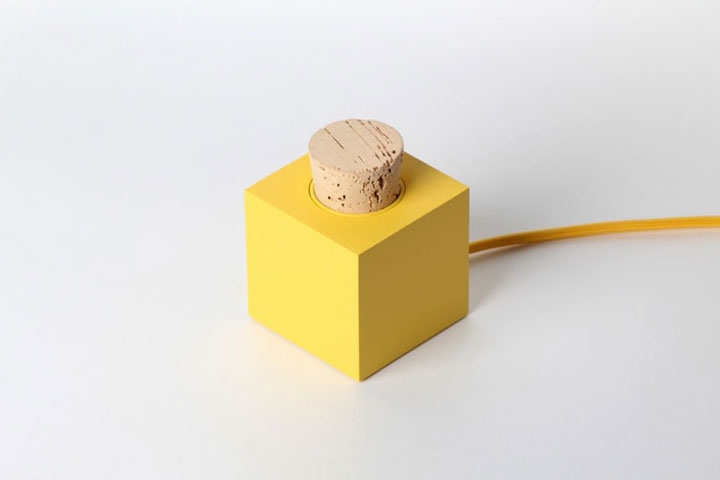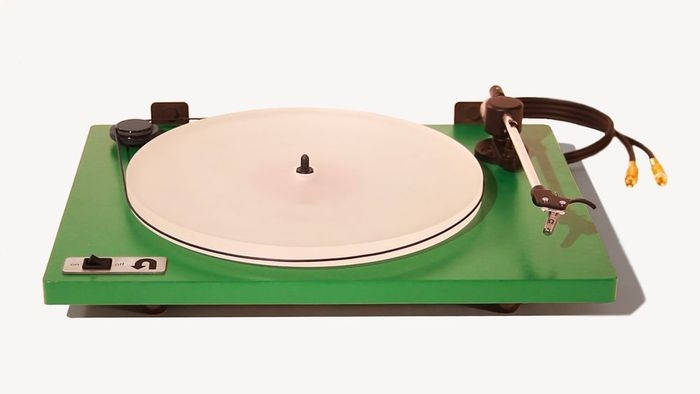Tile is a new tracking system for personal items like keys, wallets, bikes, or any material possession that can hold a tiny chip. The two part system includes a tiny white "tile" that one attaches to the item, and a smartphone app to find it. When it comes time to activate the system, the app shows the distance to a selected tile using a warmer/colder style meter (pictured below). Users can have a bunch of tiles linked to one app.
While a simple tracking system doesn't sound too outrageous in a marketplace that includes GPS-based systems like Apple's Find My iPhone and Find My Friends, the Tile system has a few distinct advantages. First, it's made for short ranges. In other words, GPS-based systems are able to show a user that their phone is indeed somewhere in their house, but Tile can show which couch cushion it's under. Second, Tile has an interesting "lost item" feature that uses their entire network of users to find and report the location of a tile that's gone missing. More on that in the video below.
One unexpected quirk of the system is that the tiles have no user-replaceable battery and only last about a year. Because the chip can't be charged, users have to purchase a new Tile once a year. Don't fret, the old ones are recycled.
Each Tile costs $24.95, with the first shipments expected Fall/Winter 2013.
The old iPhone (or iPod) cable isn't looking so pure and white anymore, is it? Gnawed on by your cat, coffee-stained and gross, it's just an eyesore dangling from your laptop at this point. Enter the durable, handsome and lengthy (at three feet) textile-covered Eastern Collective 30 Pin Cable. It works with iPhone 4s, 3s and pre-2012 iPods and gives your device and desk the vibrant color and respect it deserves. Isn't it about time?
Available in orange/red or blue/white color schemes in the Nothing Major shop.

Not long after announcing a switch to a subscription cloud-based model for its ever-popular Creative Suite, Adobe steps into the hardware market with the "Project Mighty" stylus and "Napoleon" ruler. The devices are designed to work together, using Bluetooth and an upcoming Adobe app, to mimic the experience of sketching with a pen on paper. From a tactile perspective, the stylus features a pressurized tip to make line drawing feel more natural. Conceptually, the devices are built for collaboration, and have sharing functions built-in to move assets to and from the cloud and whatever tablet you're working on. When we get our hands on them, we'll let you know. [via Design Taxi]


Bored with your current social media and photosharing options? Then the new Tapestry storytelling app might become your go-to social network. The idea is to assemble short, illustrated, and clickable stories using the stockpiled photos on your cell phone's camera and animated text, then share them with whomever has a few seconds to tap through your work. The interface is surprisingly organic: tap to advance the story. That's it. There's no rewind, fast forward, or zoom, but the comedic timing of a well placed text animation might surprise you. See what Tapestry can do with this story about the anguish of being a two-year-old, for example.
Devin Hunt, the man behind Hailpixel, is a designer's designer. I don't mean his work is inaccessible, but rather that he creates tools to make web designers' lives much easier. His latest project is a new web application that provides an intuitive way for web designers to choose a color pallete, complete with HTML color codes. The app works amazingly well for two reasons. First, the controls are as simple as possible: you simply move your cursor around the screen right or left to adjust the hue, up and down for lightness, and use the scroll feature to adjust saturation. You save a color with a single click. Even better, all the colors you've previously selected remain visible, which makes assembling a palette a painless experience.
Spend some time with the color selector at color.hailpixel.com.
Norwegian design studio Skrekkøgle obviously has fun with their work. Everything they do has an element of whimsy and cheekiness to it, which somehow never seems to take anything away from the functionality of the concept. The Plugg radio is no exception; the sunny little cube is simply operated by removing the cork from the top. Much like the satisfaction in uncorking a bottle of wine, as soon as you uncork the Plugg, the sounds start spilling out. The kind of tactile relationship this creates with something we tend to take for granted is a welcome idea. Unfortunately, it's still just a prototype. Any angel investors reading this?
As vinyl has worked its way back into our hearts and music stacks, the modern music lover sometimes faces a dilemma. Sure, vintage turntables are an option, but they are becoming more difficult to maintain. New turntables are either prohibitively expensive (above $400) or cheaply-made USB units for the digital-transfer market.
Enter the Orbit Turntable by U-Turn Audio, an all-analog, precision turntable with a high quality needle that comes in at a fraction of the price of similar turntables on the market.
Designed by a group of young engineers, musicians, and entrepreneurs from the Boston area, the turntable prototype was created with a grant from Northeastern University. It should please audiophiles and casual listeners alike.
Naturally, with the stats and quality the Orbit is boasting at its nice price ($150 gets you one on Kickstarter, $250 the limited edition Kickstarter green edition), the Kickstarter fund has done quite well. That said, you can still nab one before tonight's deadline, or even pledge your way to a custom-painted, Renaissance Edition at $500, still a good deal for a turntable in its class.
